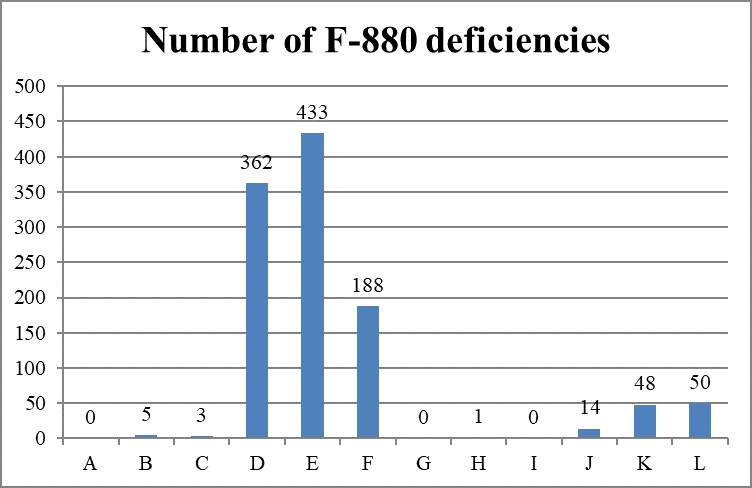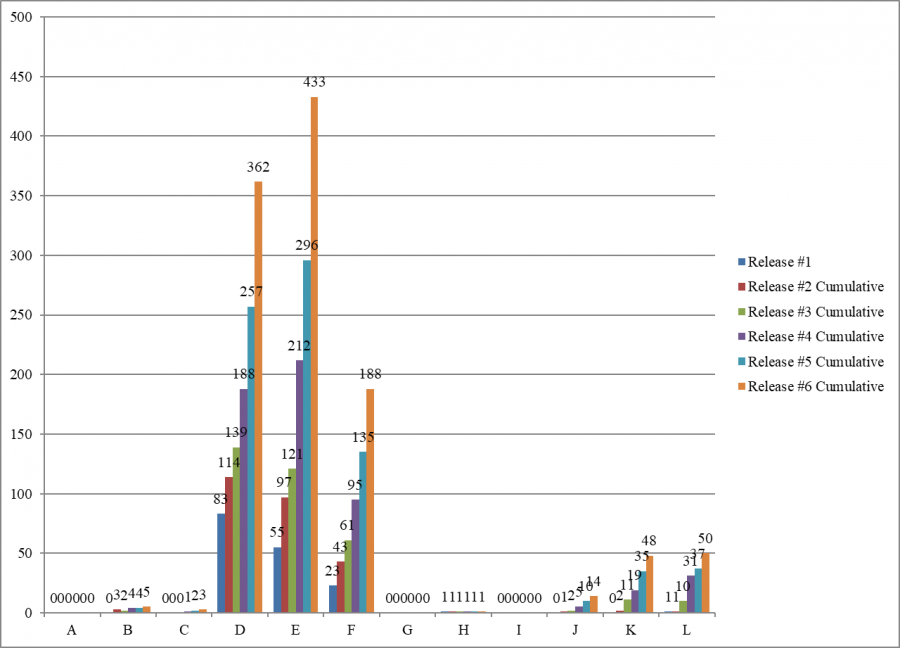In
March 2020, the Centers for Medicare & Medicaid Services (CMS) suspended
the regular survey process and announced that it would conduct limited surveys
that focused on infection prevention and control issues.[1] Since June, CMS has made information
about these limited surveys publicly available, on the last Wednesday of each
month, through the federal website Nursing
Home Compare. The Center for Medicare Advocacy has analyzed
these survey data each month and issued reports describing the findings.
While the total number of surveys has dramatically increased, now totaling more
than 40,000, the findings are virtually the same each month.
For
six months, CMS has reported that fewer than 3% of the surveys have cited
infection control deficiencies, and that the overwhelming majority of
deficiencies have been classified as no-harm. A second publicly-available
CMS website, Quality, Certification and Oversight Reports (QCOR), reports data
about surveys, deficiencies, and civil money penalties. The two
publicly-available data sets are not consistent with each other, reporting
different information about surveys and deficiencies.[2] Adding to the confusion about
surveys and infection control deficiencies is reporting by newspapers and state
departments of health about deficiencies and penalties that do not appear on
the publicly available federal websites.
Another
point of confusion was CMS’s report, on August 14, 2020, that it had cited more
than 180 “immediate jeopardy” level deficiencies for infection prevention and
control at nursing facilities, triple the rate from 2019, and that it had imposed
civil money penalties exceeding $10 million for the deficiencies.[3] CMS acknowledged
in a call with nursing home residents’ advocates on August 19 that the data
reported on August 14 were available only in an internal CMS database, not on
its two publicly-reported databases. Even now, however, nearly three
months after CMS’s announcement, the publicly-reported information does not
support CMS’s claims about deficiencies or penalties.
Changes
in surveys continue. In August, CMS announced that states should
gradually begin conducting standard surveys.[4] These survey results are
intermingled with the focused infection control surveys.
This
report discusses both the sixth cumulative release of focused infection control
surveys (reported by CMS on October 28) and, separately, data for the month of
September.
Cumulative Survey Data
As
of October 28, Nursing Home
Compare indicates that state survey agencies had conducted 40,144
surveys and cited 1104 deficiencies (2.8%) for infection control (F-880).
The
number and percentage of immediate jeopardy infection control survey have
increased with each cumulative survey, but remain a small number and percentage
of facilities that have had surveys.
|
Date of CMS release |
Total number of
surveys reported |
Total number (percent)
of infection control deficiencies cited |
Total number (percent)
of immediate jeopardy deficiencies cited |
|
June 4 |
5,724 |
163
(2.8%) |
1 (1.0%) |
|
June 24 |
9,899 |
262
(2.6%) |
4 (1.5%) |
|
July 29 |
16,987 |
347
(2.0%) |
22 (6.6%) |
|
August 26 |
25,593 |
556
(2.2%) |
48 (8.6%) |
|
Sept. 30 |
32,681 |
777
(2.4%) |
75 (9.7%) |
|
Oct. 28 |
40,144 |
1,104 (2.8%) |
112 (10.1%) |
Most
infection control deficiencies are classified as no harm. Of the 1,104
deficiencies, 983 (89.0%) are classified as “no actual harm with the potential
for no more than minimal harm” – i.e., “no harm.” Only 112 of the 1104
F-880 deficiencies (10.1%) are classified as immediate jeopardy.
Each
of the six cumulative surveys has cited most of the infection control
deficiencies as “no harm” – levels D, E, and F.
Scope and Severity of F-880
Deficiencies
Cumulative Data (Oct. 28,
2020)

As
categorized by the combined scope and severity classifications, most
deficiencies (983 of 1,104 deficiencies, 89.0%) are cited as “minimal harm or
potential for actual harm” (levels D, E, and F), also known as “no harm.”


September Surveys
In
September, state survey agencies conducted 3855 surveys. Only 27 surveys
(.007%) cited an infection control deficiency. All 27 infection control
deficiencies were classified as “no harm.”
Conclusion
As
COVID-19 cases increase in nursing facilities nationwide and residents and
staff die, CMS continues to report that surveys cite few deficiencies and
classify most of them as “no-harm,” meaning no enforcement.
___________________
[1] CMS,
“Suspension of Survey Activities,” QSO-20-12-All (Mar. 4, 2020), https://www.cms.gov/files/document/qso-20-12-all.pdf;
CMS, ‘Prioritization of Survey Activities,” QSO-20-20-All (Mar. 23, 2020), https://www.cms.gov/files/document/qso-20-20-all.pdf.
[2] “Infection Control
Surveys At Nursing Facilities” (CMA Alert, Oct. 29, 2020), https://medicareadvocacy.org/infection-control-surveys-at-nursing-facilities/.
[3] CMS, “Trump
Administration Has Issued More Than $15 Million in Fines to Nursing Homes
During COVID-19 Pandemic” (Press Release, Aug. 14, 2020), https://www.cms.gov/newsroom/press-releases/trump-administration-has-issued-more-15-million-fines-nursing-homes-during-covid-19-pandemic.
[4] CMS, “Enforcement
Cases Held during the Prioritization Period and Revised Survey Prioritization,”
QSO-20-35-ALL (Aug. 17, 2020), https://www.cms.gov/files/document/qso-20-35-all.pdf.
No comments:
Post a Comment